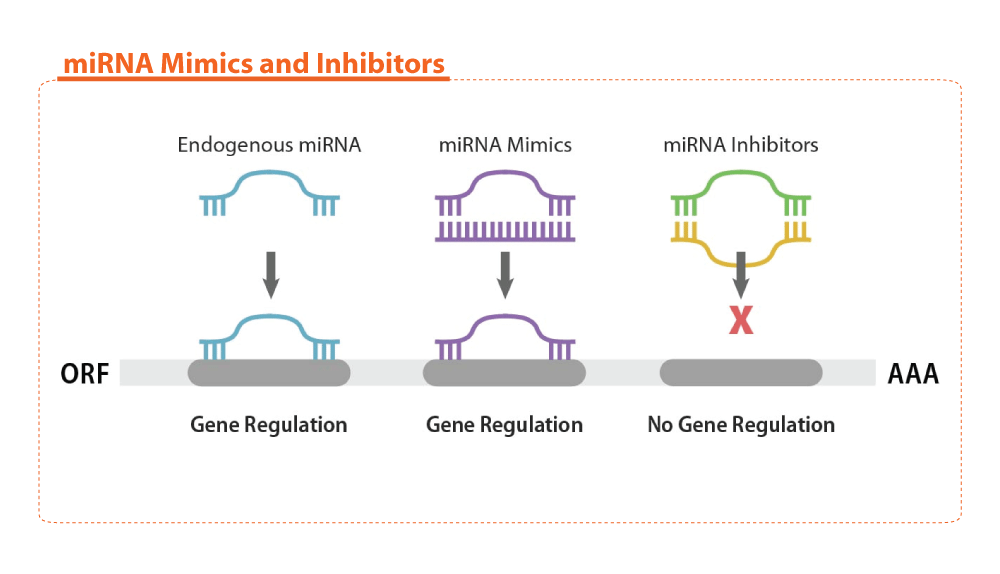Synthetic miRNA Mimics and Agomirs
abm offers synthetic miRNA Mimics and Agomirs for probing the function of endogenous microRNAs. miRNA Mimics are chemically synthesized, double-stranded RNAs that replicate the function of endogenous mature miRNAs upon transfection, while miRNA Agomirs are modified mimics exhibiting enhanced stability and transfection efficiency. Both Mimics and Agomirs bind to the 3'UTR of the target gene and suppresses native gene expression.
Key Features:
- We offer a collection of Mimics & Agomirs targeting >5000 mature miRNAs in human, mouse, and rat.
- Mimics can be transfected into many cell types for rapid gene knockdown.
- Agomirs have chemical modifications to increase transfection efficiency and stability.
Search our collection of miRNA Technology products using miRNA name, symbol or accession number:
Search results will be displayed here
Additional Information
Documents
Top Publications
| 01 | MicroRNA-377 Regulates Mesenchymal Stem Cell-Induced Angiogenesis in Ischemic Hearts by Targeting VEGF. Wen, Z et al. Plos One 9 (9):e104666 (2014). doi:10.1371/journal.pone.0104666 |
| 02 | MicroRNA-146a induces immune suppression and drug-resistant colorectal cancer cells. Tumor Biology 39(5):1-12 (2017). doi:10.1177/1010428317698365 |
| 03 | Down-Regulation of eIF4GII by miR-520c-3p Represses Diffuse Large B Cell Lymphoma Development. Mazan-Mamczarz, K et al. PLoS Genet. 10(1):e1004105. (2014) doi: 10.1371/journal.pgen.1004105 |
FAQs
| What is the Sanger miRBase Sequence Database? |
|
miRBase is a sequence database that has been established by the Sanger Institute. Each entry in the microRNA Registry represents a predicted hairpin portion of a microRNA transcript (termed mir in the database), with information on the location and sequence of the mature microRNA sequence (termed miR). The database provides microRNA gene hunters with unique names for novel microRNA genes prior to publication of results and a searchable database of published microRNA.
|
| When was the latest update of your array sequences? |
|
The content of our arrays has been updated to miRBase Release 16.0.
|
| Do I need to use an internal control primer for quantitative detection of miRNAs (the same as housekeeping primers which we use in qPCR for mRNAs detection)? |
|
For human miRNA plates, the controls are as follows:
1) SNORD44 Primers 2) SNORD48 Primers 3) U6 Primers 4) hsa-miR-16-5p Primers |
| Which genes are targeted by a specific miRNA? |
|
You can search for predicted and validated miRNA target genes at http://mirbase.org/.
Just type in your miRNA name (eg. hsa-mir-145) or accession number in the search bar and look for the targeted genes. |



